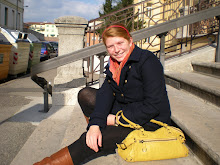 When I found out that we were to choose a lyric or quote that we liked and express it in type face I was very excited. I took introduction to graphic design my sophomore year and thought, this should be easy. I was familiar with Photoshop, Illustrator, and InDesign, but after not using these programs for over a year I realized I had forgotten a lot.
When I found out that we were to choose a lyric or quote that we liked and express it in type face I was very excited. I took introduction to graphic design my sophomore year and thought, this should be easy. I was familiar with Photoshop, Illustrator, and InDesign, but after not using these programs for over a year I realized I had forgotten a lot. For this assignment we were only allowed to use Photoshop. We were given a short tutorial in class about fonts, excuse me "type face," a term new to me! Examples were shown in class so we had a good idea of what was expected from us. This was a great building-block assignment since there were not a lot of components and requirements. It gave me a great chance to experiment in Photoshop and learn the basics of the program, there is so much more to learn though!
I started this assignment with a simple google search. I began with one of my favorite poets, Robert Frost, but found that none of his stanza's were jumping out at me. Instead, I went in the total opposite direction and typed in Andy Warhol. I've always been a fan of his work and was feeling inspired by the Marilyn Monroe pop art poster I have hanging in my bedroom. I came across several of his famous quotes, but decided to choose one I had never heard before, "Don't pay attention to what they write about you. Jut measure it in inches." I thought, hmmm, I could do something neat with the inches, not only by making it HUGE, but selecting a completely unique font that truly embodied what Warhol meant.
I used five fonts in this project. I wanted to have a clear connection between the fonts and the words themselves.
I wanted the margin to be consistent on each line, like a tabloid or newspaper. I put "Don't" and "What" in bold capitals since they made the biggest statement to me. Then the words "pay attention to" and "they...about you," in outlined letters. For "Just Measure it in inches," I personally capitalized each letter at the beginning of the word because I thought it looked better when each word had a larger first letter. The word "write" is a script font. Originally I had a newspaper type font, but it didn't flow was nicely as the script font.As for "inches," I made the font HUGE and choose a really interesting font, Toolbox, STD. Each letter looks like something that is found in a toolbox.
I'm very happy with how my font poem turned out. I really enjoyed playing around with all the different fonts and matching particular words to the right typeface. I encountered very few problems with this project. The only initial problem I had was not knowing how to reselect the words after deselecting them. I was shown that writing each word individually was best versus using one giant text box. That way I had control over each word. I had plenty of time for this project. The only thing I would have changed is making the background black, and the words white, but it would not have worked with one of the fonts I chose. I really enjoyed this project as an introduction to Photoshop!
I wanted the margin to be consistent on each line, like a tabloid or newspaper. I put "Don't" and "What" in bold capitals since they made the biggest statement to me. Then the words "pay attention to" and "they...about you," in outlined letters. For "Just Measure it in inches," I personally capitalized each letter at the beginning of the word because I thought it looked better when each word had a larger first letter. The word "write" is a script font. Originally I had a newspaper type font, but it didn't flow was nicely as the script font.As for "inches," I made the font HUGE and choose a really interesting font, Toolbox, STD. Each letter looks like something that is found in a toolbox.
I'm very happy with how my font poem turned out. I really enjoyed playing around with all the different fonts and matching particular words to the right typeface. I encountered very few problems with this project. The only initial problem I had was not knowing how to reselect the words after deselecting them. I was shown that writing each word individually was best versus using one giant text box. That way I had control over each word. I had plenty of time for this project. The only thing I would have changed is making the background black, and the words white, but it would not have worked with one of the fonts I chose. I really enjoyed this project as an introduction to Photoshop!


